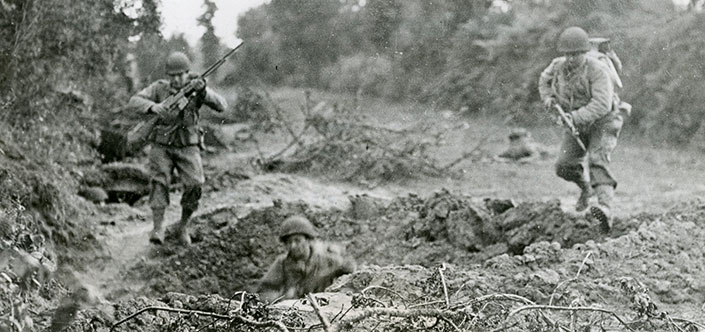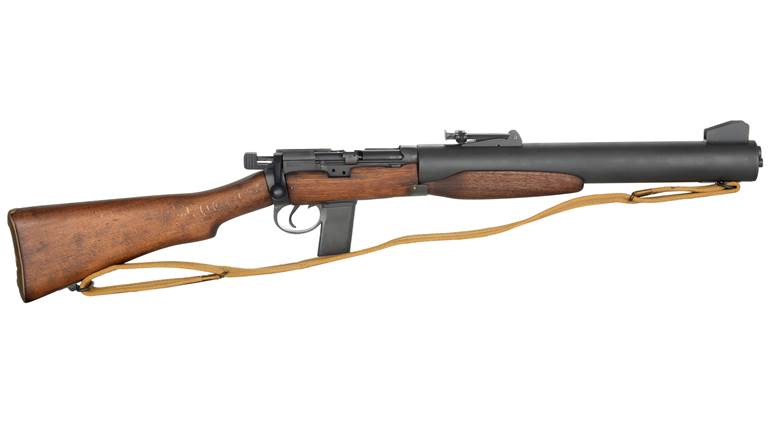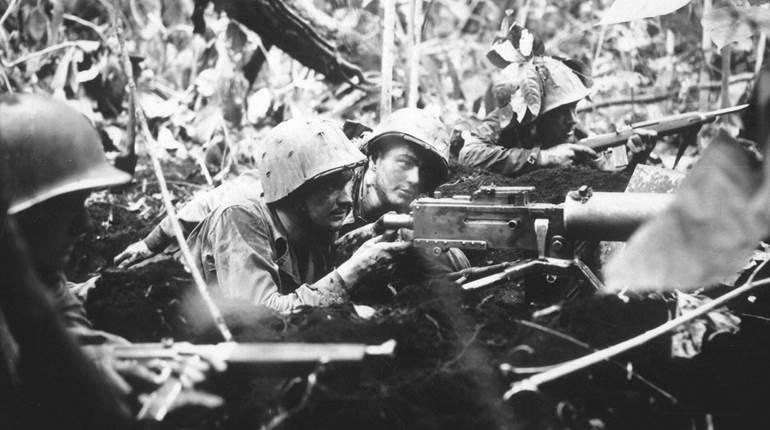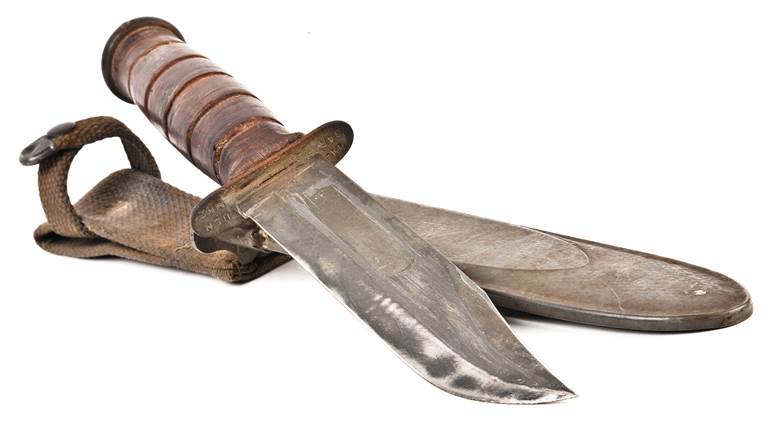
The editor of American Rifleman, Bill Shadel, traded his typewriter for a uniform and went overseas as a war correspondent for this magazine some 75 years ago. Reprinted here is a report of the action he saw as originally published in the August 1944 issue.
By Bill Shadel
With the First Army in Normandy, July 16—The Battle of the Hedgerows here in Normandy is a battle of small arms. It doesn’t take many days touring the battlefront to find the key man in this fighting. He’s the man who dares to stalk the hedgerows, draw fire from cleverly concealed Boche, then snap-shoot his way to the next hedge. A rifle or BAR is the only thing he can carry. A field no larger than our football fields, usually smaller, but enclosed always by man-high hedges, is his battleground.
Machine guns are set up on flanks to spray the hedges and give covering fire for advance. Mortars and artillery lay down their fire ahead. But the Boche is dug in, either inside or below the bank that supports the hedge. Here he sticks it out until our advance reaches a position close enough for a bayonet rush. Then he gets out and, in scattering, gives you your first sight of him and your first chance for a shot. The shooting ranges are close. Most shooting is hurried. Rifle grenades, bazookas, hand grenades are used blindly on hedges where Germans may be waiting. Unless they are rushing forward, riflemen have no target to shoot at. That is the general picture. But the stalker, the scout, the man who crawls along the hedgerows or waits with binoculars for signs of movement ahead, is more valuable here than ever.

Corporal Al White, of Rutherford, N.J., who roams the front as a combat reporter, waited three hours to locate an enemy observer known to be directing mortar fire on our troops. Finally, silhouetted in the lowering sun, with enough light in back of him to show the outline of his upraised arms, the German was spotted behind the hedge. The range was 400 yds. Corporal White gave the M1 eight clicks. No windage was required. He fired, and his observer said he made a hit. The mortar fire ceased and that night our advance showed up the dead German officer.
A battalion was held up on a slope fronting a river. Staff Sergeant R.C. Hull, of Colorado Springs, Colo., noticed some enemy movement behind a hedgerow across the river and an opening where Germans crossed. Hull lay in position awaiting a chance for a shot. Over a period of less than half an hour he fired seven shots at Germans crossing the gap. Each shot was witnessed by either a major or a captain watching through glasses. They testified seven Germans were killed or wounded.
Then there was Pvt. Frank R. Kasperek, of Staunton, Va. In an outpost of a defensive position along the hedgerows, Germans were trying to set up a machine gun on their flank to traverse a field which must be crossed in any forward movement of our troops. By working with an observer, Kasperek would be tipped off when to expect Jerry to be crossing the gap in the hedgerow. As they came into view, Kasperek would fire. His marksmanship accounted for eight Germans during the day from this one position, and that machine gun was never put into position.
There are hundreds of incidents like that on every division front. The men trust their M1s. I have heard too many complain of an occasional all-important target which the carbine will not reach. Yes, for this phase of the Normandy fighting, it’s a doughboy’s war, just as in Italy, and the riflemen are the men in the hedgerows.





































